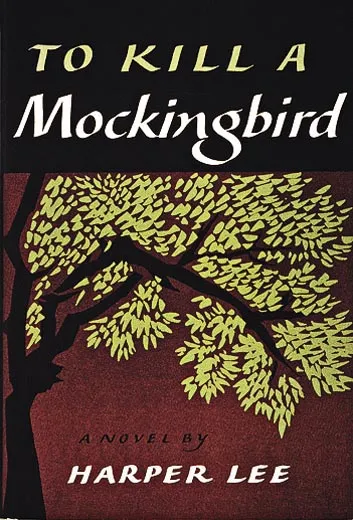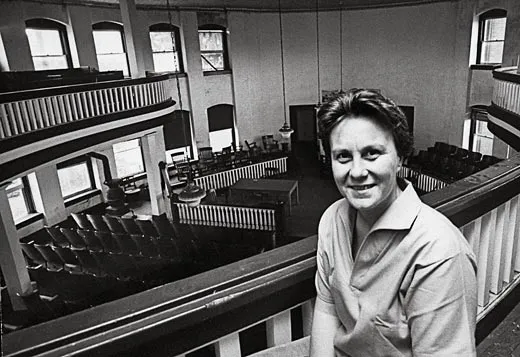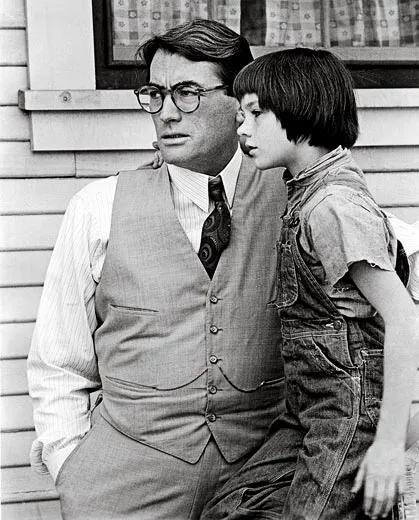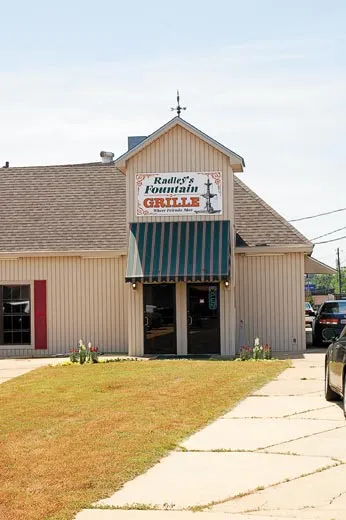what words do harper lee use to paint a picture
/https://tf-cmsv2-smithsonianmag-media.s3.amazonaws.com/filer/Presence-To-Kill-a-Mockingbird-Harper-Lee-631.jpg)
To spend an 60 minutes in Monroeville, Alabama, is to know why Harper Lee, the author of To Kill a Mockingbird, ranks as one of the crankiest writers on the planet. Strongly inclined to put aside the hype and hoopla and allow literature speak for itself, Lee, the best-known native of the boondocks (popular. 6,372) that served as the model for her novel's Maycomb, has found herself living a short drive from i eatery chosen the Mockingbird Grill and another named Radley's Fountain, subsequently Boo Radley, the graphic symbol in Mockingbird who might be voted Least Likely to Get a Restaurateur. That would be a mere T-shirt's toss from a gift shop peddling Mockingbird hats, tote bags, necklaces, Christmas ornaments, refrigerator magnets, wrist bands (inscribed "I see it, Scout, I come across it!") and paper fans. The souvenir shop is in the venerable courthouse where as a child Lee watched her father practice law, and which she afterwards rendered so vividly in her book. The courthouse has long since been turned into a Mockingbird museum, to the delight of a constant stream of camera-toting tourists, strange and domestic. I sympathize with Lee, who has steadfastly refused to take part in the merchandising of her nearly famous accomplishment. Life can't be piece of cake when everything you detest about success stands between you lot and the Piggly Wiggly.
This could be an peculiarly maddening flavour for the 84-year-old author, given that 2010 marks the 50th year since To Impale a Mockingbird was published, and we all know how the media love anniversaries. Witness this very article, for case, though believe me no novelists were bellyaching during its production. After what I had heard near her, I was too scared to knock on the door of her residence of record, a cracking brick, reportedly book-lined house she shared with her older sister Alice, or even to request an interview through the closest matter there are to proper channels. I should too disembalm at this juncture that I am working under the influence of Inspirational Writer's Water, purchased at the gift shop described above.
Lee relied on perspiration equally much as inspiration during the fatigued-out creation of the volume that, when it finally appeared on July eleven, 1960, changed her life instantly and forever. Trans-lated into more than forty languages, Mockingbird has sold over xxx 1000000 copies; with help from the anniversary hullabaloo, HarperCollins (the book was originally published past the now-defunct Lippincott) will probably sell at least a million more this yr, by and large to high schools and junior high schools, where it has been a staple of reading lists since information technology won the Pulitzer Prize for fiction in 1961. The 1962 movie version, starring Gregory Peck, won iii Oscars, yet somehow that earnest black-and-white film never trumped the three-dimensional chiaroscuro Mockingbird that shimmers in peoples' imaginations after they experience Lee'south work on the printed page. Indeed, many say the story of Sentry Finch; her lawyer father, Atticus; her brother, Jem; their neighbor Dill; and the ill-blighted Tom Robinson is their all-time favorite novel. In surveys asking what one volume every civilized person should read, Mockingbird routinely finishes 2d to the Bible, and in one (if I may go a fleck Maycomb on you hither) it up and finished first.
Readers take been living with the book for so long that they may not realize how profoundly odd this is. Mockingbird is hardly a marketer'southward or publicist'due south dream, and could easily have been dismissed equally a downer. Set in the "tired old boondocks" of Maycomb, in the unglamorous era of the Great Depression, it tells the story of a widower attorney who tries in vain to defend a black laborer from a wrongful accuse of rape. It's pretty clear at the commencement that Tom Robinson'southward word won't be taken over that of the unstable white incest victim who accuses him. And...guess what? Information technology isn't. That maddening miscarriage of justice is not even the worst affair that happens to Robinson in the book. Like life itself, Mockingbird has no neat, symmetrical story arc, allowing obstacles to be introduced and then overcome before the catastrophe. (That may be one reason the flick'due south producer, Alan J. Pakula, said in that location was no studio stampede to acquire film rights.) The other affair Mockingbird lacks is what salespeople might telephone call synergistic potential: it has no series mates, or even a sequel, that can help turn a book into a brand. At that place is no To Kill a Cockatiel or Valley of the Dills or Am I Boo? Mockingbird is Harper Lee's one and only published book.
Lee has never discussed her output, or lack of 1, publicly. Not since the mid-'60s has she said annihilation for the record nearly her career. "My volume had a universal theme," she told the Birmingham Mail service-Herald in 1962. "Information technology'southward not a 'racial' novel. Information technology portrays an aspect of civilization, not necessarily Southern civilisation."
Just don't phone call her a recluse. Miss Nelle, equally she'due south known around boondocks (she went with her middle name on the dust jacket because she didn't want Yankees to elide Nelle Lee into "Nellie"), is that tallish adult female with closely cropped white hair who over the years you could run into in the aisles of the grocery store or having java at Hardees, oftentimes in the visitor of Alice, who besides never married. (Lee is rumored to have had a slight stroke in 2008.) They were living comfortably merely not extravagantly a short walk from the site of the modest wood-frame house where she, and the book'south narrator, Scout, were raised. (In its place at present is an water ice-cream stand up known, surprisingly, as Mel's Dairy Dream, and not To Chill a Mockingbird.) She would play golf and, occasionally, fish. ("I'm non similar Thomas Wolfe," Lee said in a 1961 Life mag interview. "I can go home again.") During the summertime, when she would drift to New York Metropolis, she would go to museums and the theater and root for the Mets, the natural selection for someone with an underdog affair as big as the Ritz. In 2007, Lee went to the White Business firm to have the Presidential Medal of Freedom, America'south highest noncombatant honor, from President George W. Bush-league (and said nix that was reported). She has a quick and easy smile for those who respect her privacy. Simply reporters who request an interview through 98-year-old Alice, a sneaker-wearing attorney at the family firm and her sister'due south semiofficial gatekeeper, can expect a polite just ironclad refusal. ("Hell no," Lee herself in one case wrote in reply to a scribe'southward request.)
It was not always thus. At first, maybe buoyed past the by and large rave reviews and strong sales, Lee talked to well-nigh anyone with a pad or microphone, proverb that Atticus only superficially resembled her dear father, A.C. ("1 of the few men I've known who has 18-carat humility") and the trial in her novel "was a composite of all the trials in the world" (as opposed to, say, a gloss on the Scottsboro Boys' trial, as has been widely supposed). The questions, though, tended to be repetitive, annoyingly then. Journalists seemed obsessed with determining the degree to which the novel was autobiographical. Lee tended to say that her characters were basically fictional, but her biography does seem more cryptic. After all, she had been a tomboy like Lookout man, with an older brother similar Jem. A Boo Radleyish character lived but downwardly her street. Dill, meanwhile, closely resembled the young Truman Capote, who as a boy had spent summers at his cousin'due south house, side by side door to Lee's.
In one case interviewers broached the discipline of Capote, Lee might accept braced herself for a question that would take been not just abrasive but insulting: Wasn't it true that her pal Truman had written much of her volume? Capote—always competitive, and, of form, a flake of a beatnik—didn't discourage the rumor, answering vaguely when asked about his contributions to her novel. The truth (as is evident from Capote'south private correspondence) is that he did non write a give-and-take of Mockingbird, and that Lee, who assisted him as a reporter and researcher on In Cold Blood, contributed substantially more to Capote'southward 1966 blockbuster than he ever admitted. All the same, the rumor persists—to the point where it is addressed (and debunked) in one of the Monroeville museum'southward exhibits.
Another distasteful question was the inevitable two-parter about what she was doing side by side and when the world would come across it. Presently after Mockingbird appeared, Lee said, only one-half-jokingly, "All I want to be is the Jane Austen of south Alabama," and she began work on a second Southern novel, merely its progress was boring. This in itself was not surprising: Mockingbird had not exactly fallen fully formed from Lee's brain. She had turned out essays, humour pieces and short stories for campus publications during her one year at Huntingdon College in Montgomery and her years at the University of Alabama (where she studied constabulary), just writing did not come easily to her. After she moved to New York City in 1949, she struggled for years with a hodgepodge of anecdotes about small-town Southern life, first chosen Go Set a Watchman so Atticus. She received encouragement from an agent, Maurice Crain, and an editor, Lippincott'due south Tay Hohoff, who had seen the work-in-progress, simply ane dark in 1957 she flung the unfinished manuscript out the window of her Manhattan common cold-water apartment. Later a teary phone call to Hohoff, Lee charged down the stairs, recovered the forsaken pages—and then began a title-on-down revision that resulted in a book that would become a Literary Social club pick and Book of the Month Gild alternating, and that the New Yorker would phone call "unpretentious and totally ingenious" and the Chicago Tribune would hail as "a novel of stiff gimmicky national significance."
Many years later, to a fan who engaged her in conversation in a fast-food eating house in Monroeville, Lee would say straightforwardly that the success of Mockingbird "overwhelmed" her, making it incommunicable for her to write a follow-up book. She wrestled with that 2nd novel for several years—and then one day Alice rather too calmly told a BBC interviewer that the manuscript had been stolen from their home and the project had been abased. (And Alice later told a Chicago Tribune reporter that the book never got beyond the conceptual stage.) In the mid-1980s Lee began researching a nonfiction book well-nigh an Alabama preacher suspected of existence a serial killer, tentatively titled The Reverend. Simply she abandoned it, as well, perhaps feeling that simply equally she could not out-Lee Lee she could non out-Capote Capote.
From this low point, nevertheless, Lee seems to have found her style to a place of relative peace. She did squawk a few years agone when the museum crossed a line in her mind and started selling a drove of recipes called Calpurnia's Cookbook, after the black housekeeper in the novel. (The book was withdrawn.) But it seems that Lee has come up to take that she will publish simply one book, and to bask that she exceeded her expectations in doing so. "When y'all're at the top," she once told her cousin Dickie Williams, "there is just one way to go."
Lee will in all likelihood stand aside and allow Mockingbird'due south 50th ceremony happen. Truth exist told, Monroeville is a charming place, where the palpable pride in its native girl'south achievement tends to make up for the occasional crassness. Besides, Monroe--villians have been exploiting Lee's work for decades: when the movie came out in '62, Charles J. Shields reports in his biography Mockingbird: A Portrait of Harper Lee (2006), the local theater offered $10 to the first five people who showed upward with alive mockingbirds. Jane Ellen Clark, director of the Onetime Courthouse Museum, notes that pilgrims started flocking spontaneously to Monroeville in 1960, equally soon as the book was published. "All these people who said it was their favorite book would salvage up for the trip and discover the boondocks," she says. For thousands each year, "this was their vacation, and we created the museum because we wanted to requite them something to see." Every bound since 1991, the town has staged a several-times-a-week theatrical production of To Kill a Mockingbird with local volunteer actors in the roles. Human activity I takes place on the boondocks square, weather permitting, and Deed 2 within the courthouse. If the air-conditioning isn't working, it tin become steamy in that cavernous chamber, specially up in the "colored balcony" (as it was called in the '30s), where I saw concluding year's product. But if you've got a bottle of water, inspirational or otherwise, it makes for a uniquely American evening, right downward to the realization that, as you're continuing and applauding for the sometimes contradictory notions of small-boondocks values and racial tolerance, Harper Lee would prefer to be a thousand miles to the due north, cheering, "Let'southward Get, Mets!"
Charles Leerhsen wrote Crazy Good: The True Story of Dan Patch, the Almost Famous Horse in America.
Source: https://www.smithsonianmag.com/arts-culture/harper-lees-novel-achievement-141052/





Post a Comment for "what words do harper lee use to paint a picture"